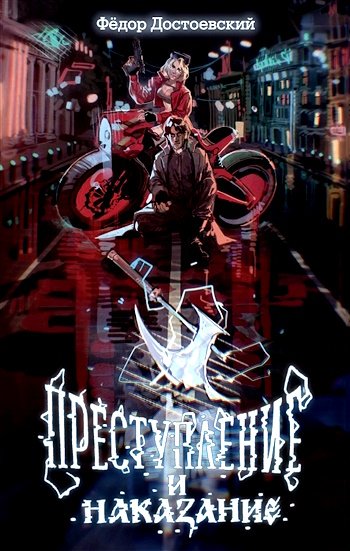Me voy al transbordador
A descargar la carreta
Me voy al transbordador
A descargar la carreta
Para cumplir con la meta
De mi penosa labor.21
[Along the track by my house
A cart-driver passed
With his sentimental songs
The Guajiro sang:
I’m going to the crossing
To unburden my load
I’m going to the crossing
To unburden my load
There I’ll reach the end
Of my crushing labor.]
“El Carretero” is a song of lament and imaginary redemption, of suffering and the bliss of aesthetic transformation. Both the observer’s prelude and the cart driver’s tune itself are sung by the same voice, a voice mimetically bridging the gap between different subject positions and bringing self and other
09-C2205 8/17/02 3:39 PM Page 271
Epilogue
/
271
into an open relationship. In the lyrics’ binary oppositions of home and street, stasis and movement, vision and music, pain and deliverance, one pole thus at once reflects and produces its opposite. The other’s difference is never as absolute as it may appear at first. Alterity here is recognized as also within the subject itself, and it can be appreciated and in fact even accessed performatively.
A delicate juncture of different sounds and voices, “El Carretero” sheds light on the location of German film today at the intersections of past and future, the popular and the national. Like the cart driver in “El Carretero,”
postunification cinema has imparted charming visions of individual redress and recovery. Even at its most epic, it has sought “a descargar la carreta”—
to unload audiences from the burdens of a past that does not seem to go away. Contrary to “El Carretero,” however, German cinema today rarely fuses grief and hope, lament and utopia, into dynamic relationships. As it reinvents historical traditions, reifies lost legends, or remakes yesterday in the image of the present, this cinema prefers to disavow the afflicted voices of the past, of the cart driver’s distressed listener and onlooker. The majority of commercial German film productions of the post-Wall era want us to believe that in spite of the shadows of Goebbels and Auschwitz the codes of the popular and the nation have reattained the kind of normalcy they may enjoy somewhere else. Yet no adept master narrative, or any reference to the untroubled coexistence of Hollywood and German film today, can ever really succeed in reconciling the dissimilar legacies of Hollywood in Berlin and Berlin in Hollywood, of Nazi Americanism and German Hollywood exile. The marks left by the bifurcation of German cinema during the course of the 1930s remain indelible. Wrong history cannot be recalled rightly.
09-C2205 8/17/02 3:39 PM Page 272
10-C2205-END 8/17/02 3:39 PM Page 273
Notes
i nt r o d u c t i o n
1. See, e.g., the various contributions to Hamid Naficy, ed., Home, Exile, Homeland: Film, Media, and the Politics of Place (New York: Routledge, 1999); and Mette Hjort and Scott MacKenzie, eds., Cinema and Nation (London: Routledge, 2000).
2. See the various contributions to Randall Halle and Maggie McCarthy, eds., Light Motives: German Popular Film in Perspective (Detroit: Wayne State University Press, forthcoming); the recent work on Weimar and Nazi entertainment cinema (Karsten Witte, Lachende Erben, Toller Tag: Filmkomödie im Dritten Reich [Berlin: Vorwerk, 1995]; Eric Rentschler, The Ministry of Illusion: Nazi Cinema and Its Afterlife [Cambridge, Mass.: Harvard University Press, 1996]; Linda Schulte-Sasse, Entertaining the Third Reich: Illusions of Wholeness in Nazi Cinema [Durham, N.C.: Duke University Press, 1996]; Patrice Petro, “Nazi Cinema at the Intersection of the Classical and the Popular,” New German Critique 74 [spring/fall 1998]: 41–56; and Thomas Elsaesser, Weimar Cinema and After: Germany’ s Historical Imaginary [London: Routledge, 2000]); on Hollywood exile (Christian Cargnelli and Michael Omasta, eds., Schatten.Exil: Europäische Emigranten im Film noir [Vienna: PVS Verleger, 1997]); on New German Cinema (John E. Davidson, Deterritorializing the New German Cinema [Minneapolis: University of Minnesota Press, 1999]); on issues of marginality and alterity in post-Wall German film (see the contributions to Camera Obscura 44 [spring 2001]); on queer cinema (Alice Kuzniar, The Queer German Cinema [Stanford: Stanford University Press, 2000]; and on the emergence of a Turkish-German minority cinema during the late 1990s (Deniz Göktürk, “Migration und Kino: Subnationale Mitleidskultur oder transnatio-nale Rollenspiele?” Einwanderung, Literatur, Kultur, ed. Carmine Chiellino
[Stuttgart: Metzler Verlag, forthcoming]). All this work has vastly complicated our sense of what may count as German national cinema in the first place. This new scholarship has made clear that we cannot talk about German national cinema without exploring its place within a much larger European and transatlantic 273
10-C2205-END 8/17/02 3:39 PM Page 274
274
/
Notes to Pages 2 –9
framework (see also Jörg Schöning, ed., London Calling: Deutsche im britischen Film der dreißiger Jahre [Munich: Text und Kritik, 1993]; Manfred Behn, ed., Schwarzer Traum und weiße Sklavin: Deutsch-dänische Filmbeziehungen, 1910 –1930 [Munich: Text und Kritik, 1994]; Jörg Schöning, ed., Fantasies russes: Russische Filmemacher in Berlin und Paris, 1920 –1930 [Munich: Text und Kritik, 1995]; and Sibylle M. Sturm, ed., Hallo? Berlin? Ici Paris! Aspekte der französisch-deutschen Filmbeziehungen, 1918 –1939 [Munich: Text und Kritik, 1996]).
3. For a prominent example see Edgar Reitz, Bilder in Bewegung: Essays.
Gespräche zum Kino (Reinbek: Rowohlt, 1995).
4. Karsten Witte, “The Indivisible Legacy of Nazi Cinema,” New German Critique 74 (spring/summer 1998): 29.

























